Genero Business Development Language
User Guide
Version 2.32
Copyright © 1995-2011, Four J's Development Tools Europe Ltd.
www.4js.com
�
Copyright © 1995-2011, Four J's Development Tools Europe Ltd. All rights reserved. All information,
content, design, and code used in this documentation may not be reproduced or distributed by any
printed, electronic, or other means without prior written consent of Four J’s Development Tools.
Genero is a registered trademark of Four J’s Development Tools.
Many of the designations used by manufacturers and sellers to distinguish their products are
claimed as trademarks:
® Four Js and its logo are registered trademarks of Four J’s Development Tools Europe Ltd.
® Genero and its logo are registered trademarks of Four J’s Development Tools Europe Ltd.
® Apple, OSX, IOS, iMac, iPhone, iPad and TrueType are registered trademarks of Apple Corps.
® Adabas is a registered trademark of Software AG.
® IBM, AIX, DB2, Dynix, Informix and Sequent are registered trademarks of IBM Corporation.
® Data General and DG/UX are registered trademarks of EMC2 Corporation.
® HP, HP-UX, Digital and Compaq are registered trademarks of Hewlett Packard Corporation.
® Intel is a registered trademark of Intel Corporation.
® Linux is a registered trademark owned by Linus Torvalds.
® Microsoft, MS, NT, XP, Silverlight and Windows are registered trademarks of Microsoft Corporation.
® Oracle, 8i, 9i and 10, Sun Microsystems, Java, JavaBeans, Solaris and MySQL are registered
trademarks of Oracle Corporation.
® Red Hat is a registered trademark of Red Hat Inc.
® Silicon Graphics and IRIX are registered trademarks of Silicon Graphics Inc.
® SCO and Unixware are registered trademarks of The Santa Criz Operation.
® All SPARC trademarks are trademarks or registered trademarks of SPARC International,
Inc. in the United States and other countries.
® Sybase is a registered trademark of SAP Inc.
® UNIX is a registered trademark of The Open Group for the United States and other countries.
™ WAP is a trademark of Wireless Application Forum Ltd.
All other trademarks referenced herein are the property of their respective owners.
�
Genero Business Development Language
User Guide
Version: 2.32
Genero Business Development Language
General
Introduction
Documentation
Conventions
Language Features
Common Terms
Dynamic User
Interface
Installation and Setup
Tools and
Components
FAQ List
General Index
SQL Management
Database
Connections
Transactions
Static SQL
Dynamic SQL
Result Sets
Positioned Updates
Insert Cursors
I/O SQL Instructions
SQL Programming
Built-in Classes (1)
base.Application
base.Channel
base.StringBuffer
base.StringTokenizer
base.TypeInfo
base.MessageServer
ui.Interface
ui.Window
ui.Form
ui.Dialog
ui.ComboBox
ui.DragDrop
Language Basics
Data Types
Literals
Expressions
Basic Syntax Elements
Exceptions
Variables
Constants
Records
Arrays
User Types
Built-in Classes
User Interface (1)
Interaction Model
Windows and Forms
Action Defaults
Presentation Styles
Form Specification Files
Form Attributes
Form Rendering
Built-in Classes (2)
om.DomDocument
om.DomNode
om.NodeList
om.SaxAttributes
om.SaxDocumentHandler
om.XmlReader
om.XmlWriter
Advanced Features
Programs
Database Schema
Globals
Flow Control
Functions
Localization
Localized Strings
Data Conversions
Environment
Variables
FGLPROFILE
Reports
User Interface (2)
Menus
Record Display
Record Input
Array Display
Array Input
Query By Example
Multiple Dialogs
Prompt for Values
Displaying Messages
Programming
Compiling Programs
Debugger
Program Profiler
Optimization
Preprocessor
File Extensions
FGL Errors
Automatic source
documentation
generator
Source code editing
Upgrading
New Features
I4GL Migration Guide
BDS Migration Guide
1.3x Upgrade Guide
2.0x Upgrade Guide
2.1x Upgrade Guide
2.2x Upgrade Guide
2.3x Upgrade Guide
User Interface (3)
Toolbars
Topmenus
Tree Views
Drag & Drop
Web Component
StartMenus
Canvas
Message Files
MDI Windows
Front End Functions
Front End Protocol
Tutorial
Summary
Overview
Using Genero BDL
Displaying Data
(Windows/Forms)
Query by Example
Enhancing the Form
Add/Update/Delete
Array Display
Array Input
Reports
Localization
Master/Detail
Changing the User
Interface Dynamically
Master/Detail using
Multiple Dialogs
ODI Adaptation Guides
Library
Extending the
�
Language
Java Interface
C-Extensions
Genero db
IBM Informix
IBM DB2 UDB
Microsoft SQL Server
MySQL
Oracle Server
PostgreSQL
SQLite
Sybase ASE
Sybase ASA
Built-in Functions
Utility Functions
DDE Support
XML Utilities
File Manipulation
functions
Mathematical functions
�
Back to Contents
Introduction: Genero BDL Concepts
Summary:
Overview
Separating Business Logic and User Interface
Portability: Write once, deploy anywhere
Advanced programming tools
Reports
Internationalization
User Extensions
The Language
Database access
Interactive statements
Language library
Forms
The User Interface
Compiling a BDL Application
Deploying a BDL Application
Resources for Programmers
Overview
You typically use Genero to build an interactive database application, a program that handles the interaction
between a user and a database. The database schema that organizes data into relational tables gives shape to
one side of the program. The needs of your user shape the other side. You write the program logic that bridges the
gap between them.
An important feature of Genero BDL is the ease with which you can design applications that allow the user to
access and modify data in a database. The Genero BDL language contains a set of SQL statements to manipulate
the database, and interactive instructions that provide simple record input, read-only list handling, updateable list
handling, and query by example (to search the database) using forms to facilitate interaction.
Genero BDL is compiled to p-code, which can be interpreted on different platforms by the Dynamic Virtual Machine
(the Runtime system).
�
Separation of Business Logic and User Interface
Genero separates business logic and the user interface to provide maximum flexibility:
The business logic is written in text files (.4gl source code modules). High-level interactive instructions let you
write a form controller in a few lines of code.
Forms for the user interface are designed in a simple-to-understand and simple-to-read form definition
syntax..
Action views (buttons, menu items, toolbar icons) in the form definition can trigger actions defined in the
business logic.
Compiling a form definition file translates it into XML. The XML-based presentation layer ensures that user
interface development is completely separated from deployment.
The user interface can be manipulated at runtime, as a tree of objects called the Abstract User Interface
(AUI).
Portability - write once, deploy anywhere
Genero provides the ability to support different kinds of display devices using the same source code. One
production release supports all major versions of Unix, Linux, Windows NT/2000/XP and Mac OS X. The same
application can be displayed with a graphical device (GUI mode) as well as on a simple dumb terminal (TUI mode).
A single code stream can be written to support HTML, Java, Windows, X.11, WML, MacIntosh OS X and ASCII
interfaces simultaneously.
�
Advanced programming tools
Genero BDL comes with a set of useful programming tools, to help you in the application development process:
Program debugger
Performance profiler
Source documentation generator
Reports
You can easily design and generate Reports. The output from a report can be formatted so that the eye of the
reader can easily pick out the important facts. Page headers and footers, with page numbers, can be defined. Data
can be grouped together, with group totals and subtotals shown. The output from a report can be sent to the
screen, to a printer, to a file, or (through a pipe) to another program, and report output can even be redirected to an
SAX filter in order to write XML.
Internationalization
Genero BDL supports multi-byte character sets by using the POSIX standard functions of the C library. Genero
BDL uses byte-length-semantics to specify the length of a character string (i.e. CHAR(10) means 10 bytes). You
must make sure that the database client locale matches the runtime system locale. For more details about
�
internationalization support, see Localization.
The Localized Strings feature allows you to customize your application for specific subsets of your user population,
whether it is for a particular language or a particular business segment.
User Extensions
When the standard Genero built-in functions and classes are not sufficient, you can write your own plug-ins by
using the Dynamic C Extensions. This allows you to implement specific function libraries in C, which can be called
from the BDL modules. Typical User Extensions interface with C libraries to drive specific devices, such as barcode
scanners or biometric identification devices.
You can instantiate Java objects from Genero by using the Java Interface. This allows you to take benefit of the
huge class library of Java.
The Language
Genero BDL is a high-level, fourth generation language with an open, readable syntax that encourages good
individual or group programming style. You write your program logic in text files, or program source modules, which
are compiled and linked into programs that can be executed by the Runtime system. Programs are easily enhanced
and extended. This makes it easy for programmers to become productive quickly, no matter what programming
languages they know. See Programs, Flow Control, Functions for additional information.
Database access
A set of SQL statements are included as part of the language syntax and can be used directly in the source
code, as a normal procedural instruction. The Static SQL Statements are parsed and validated at compile
time. At runtime, these SQL statements are automatically prepared and executed by the runtime system.
Program variables are detected by the compiler and handled as SQL parameters.
Dynamic SQL management allows you to execute any SQL statement that is valid for your database version,
in addition to those that are included as part of the language. The statement can be hard-coded or created at
runtime, with or without SQL parameters, returning or not returning a result set.
Through the native drivers of the Open Database Interface, the same Genero program can open database
connections to any of the supported databases.
For additional information, see SQL Programming.
Interactive Statements
Writing the code for interactive database applications has been simplified for you in Genero BDL; single statements
automatically compile into the lines of program code required for the common tasks associated with such
applications. These interactive statements allow the program to respond to user input. Genero BDL introduces a
major improvement with the DIALOG instruction, allowing parts of a form that have different functionality to be
handled simultaneously.
Using Windows and Forms
In Genero, programs manipulate Window and Form objects to define display areas for interactive statements within
your program. The Abstract User Interface (AUI) tree contains a definition of these objects. You can open as many
windows and forms as needed, subject only to the limits of memory and the maximum number of open files on the
platform you are using.
The OPEN WINDOW statement creates and opens a new window on the user's screen. The runtime system
�
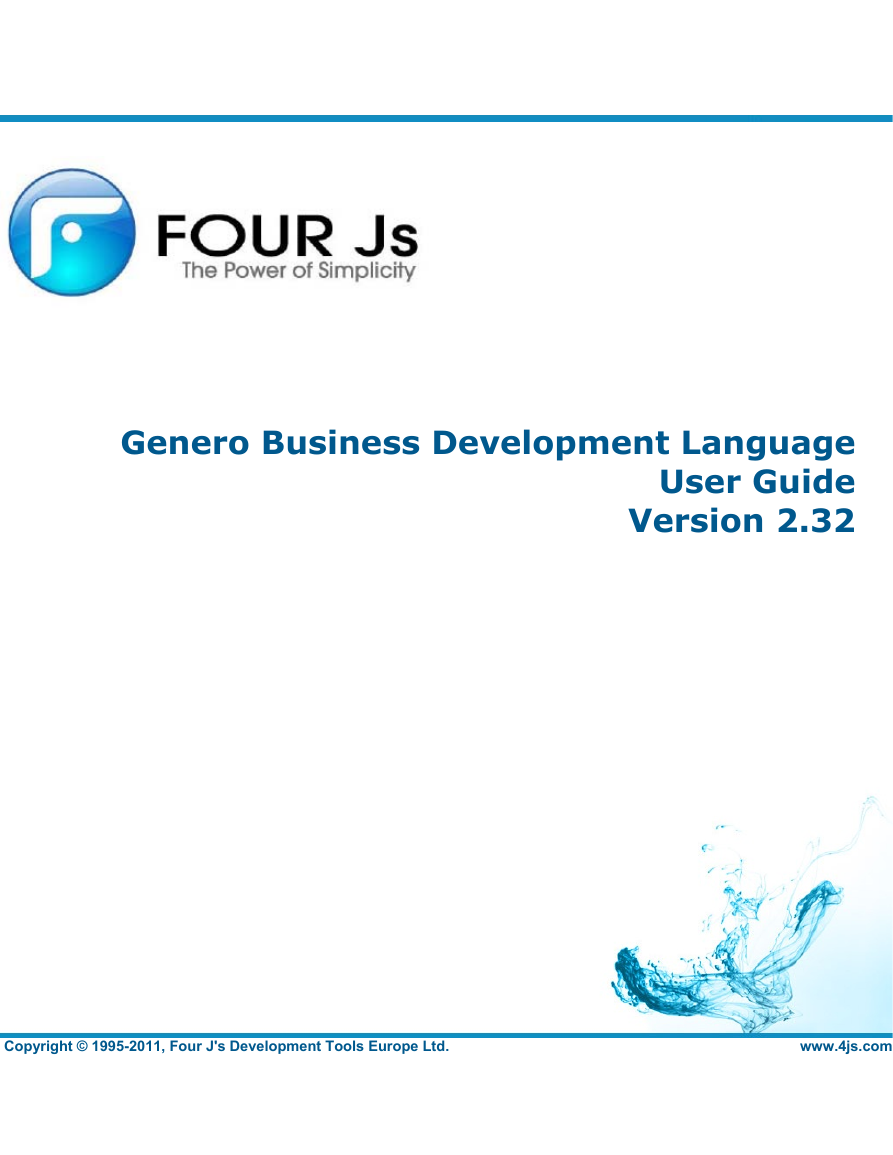

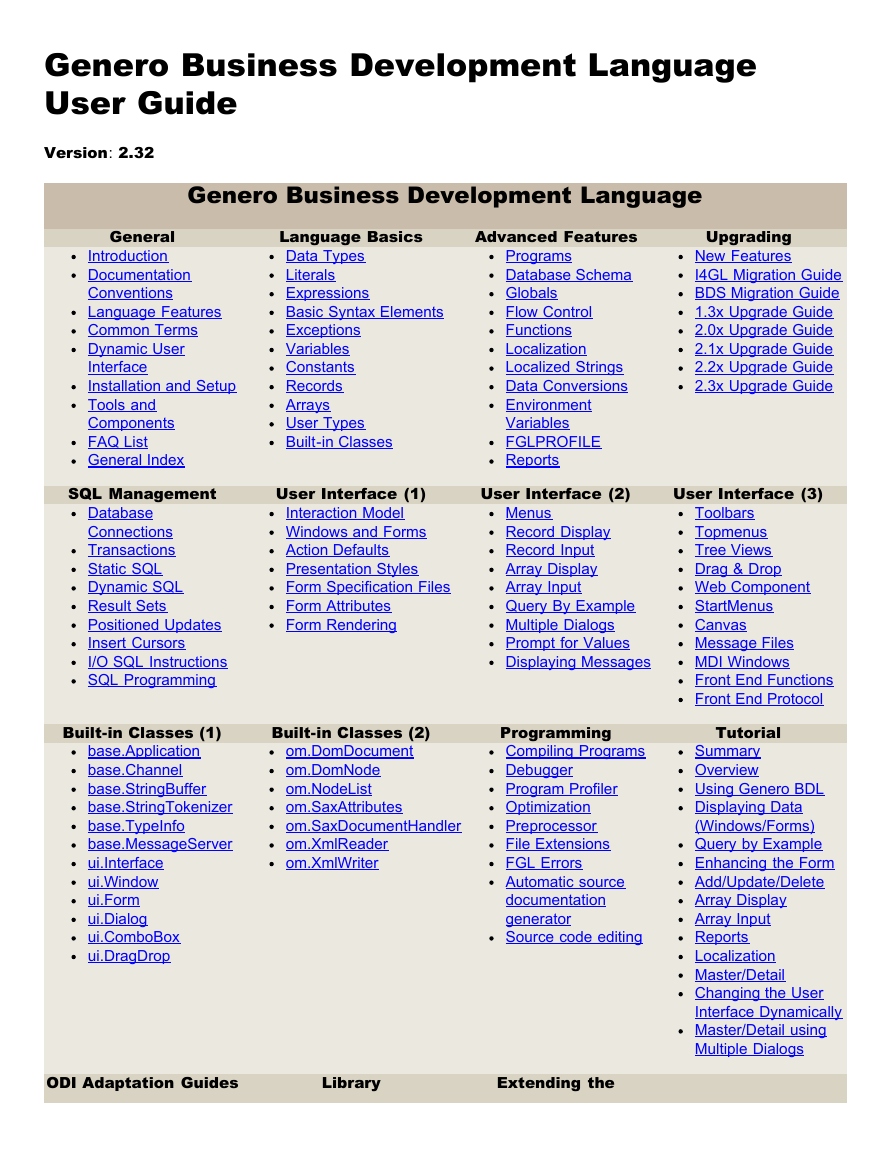
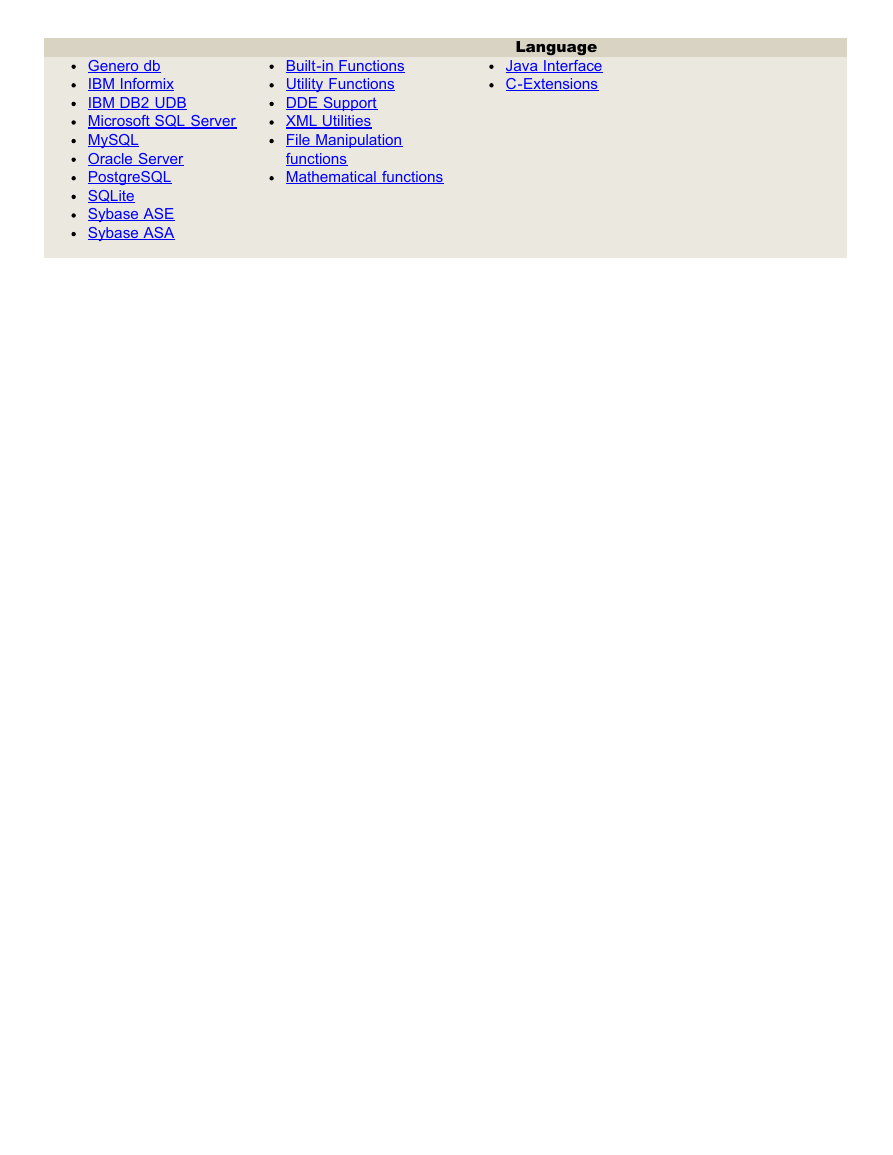
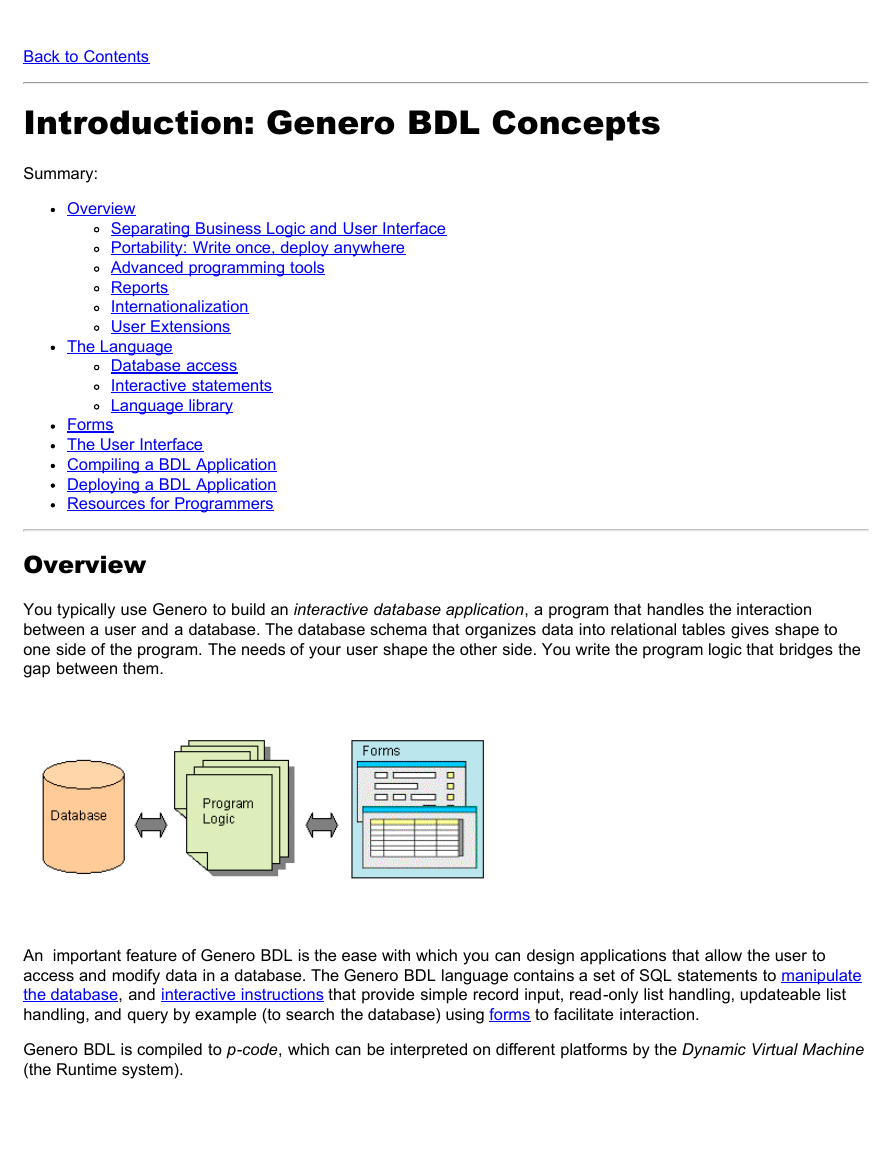
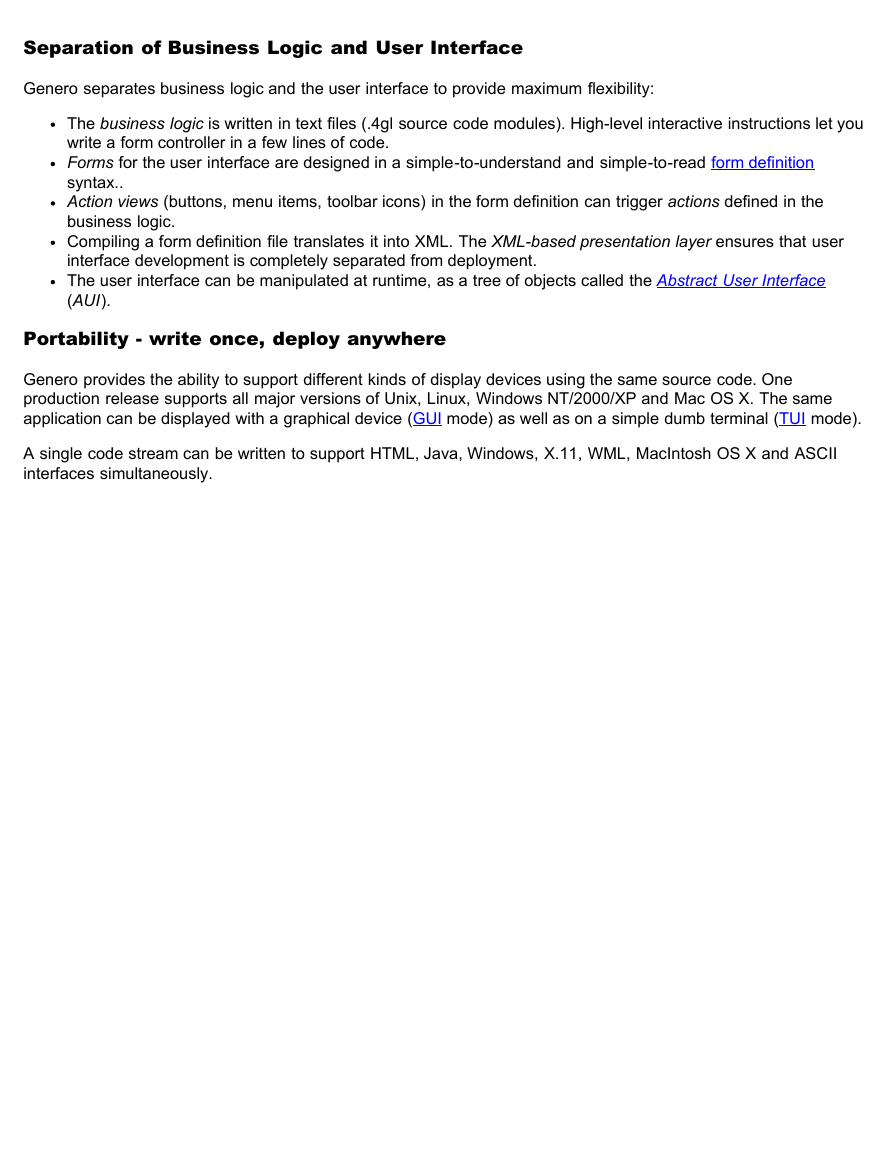










 2023年江西萍乡中考道德与法治真题及答案.doc
2023年江西萍乡中考道德与法治真题及答案.doc 2012年重庆南川中考生物真题及答案.doc
2012年重庆南川中考生物真题及答案.doc 2013年江西师范大学地理学综合及文艺理论基础考研真题.doc
2013年江西师范大学地理学综合及文艺理论基础考研真题.doc 2020年四川甘孜小升初语文真题及答案I卷.doc
2020年四川甘孜小升初语文真题及答案I卷.doc 2020年注册岩土工程师专业基础考试真题及答案.doc
2020年注册岩土工程师专业基础考试真题及答案.doc 2023-2024学年福建省厦门市九年级上学期数学月考试题及答案.doc
2023-2024学年福建省厦门市九年级上学期数学月考试题及答案.doc 2021-2022学年辽宁省沈阳市大东区九年级上学期语文期末试题及答案.doc
2021-2022学年辽宁省沈阳市大东区九年级上学期语文期末试题及答案.doc 2022-2023学年北京东城区初三第一学期物理期末试卷及答案.doc
2022-2023学年北京东城区初三第一学期物理期末试卷及答案.doc 2018上半年江西教师资格初中地理学科知识与教学能力真题及答案.doc
2018上半年江西教师资格初中地理学科知识与教学能力真题及答案.doc 2012年河北国家公务员申论考试真题及答案-省级.doc
2012年河北国家公务员申论考试真题及答案-省级.doc 2020-2021学年江苏省扬州市江都区邵樊片九年级上学期数学第一次质量检测试题及答案.doc
2020-2021学年江苏省扬州市江都区邵樊片九年级上学期数学第一次质量检测试题及答案.doc 2022下半年黑龙江教师资格证中学综合素质真题及答案.doc
2022下半年黑龙江教师资格证中学综合素质真题及答案.doc